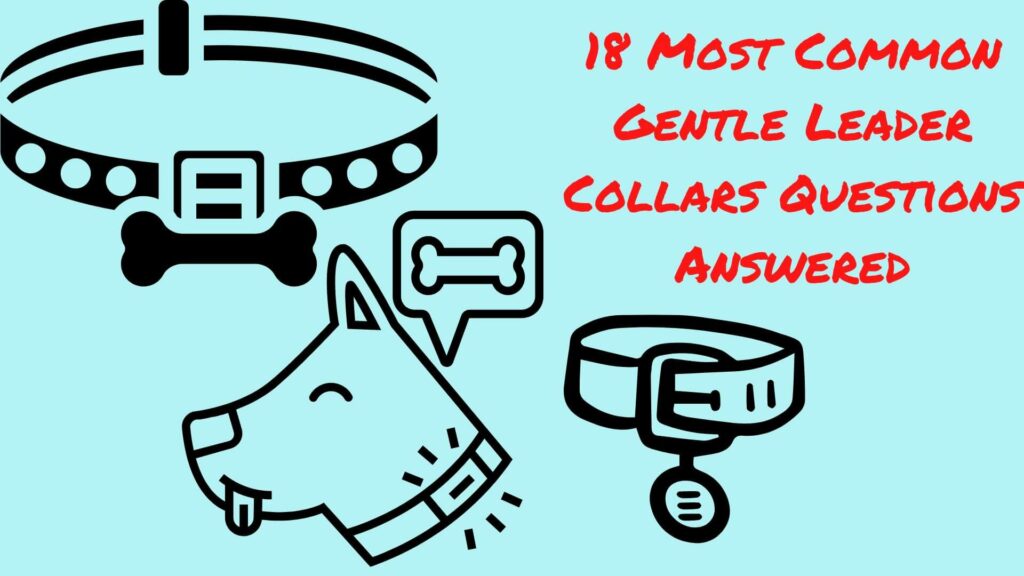If you’re a responsible dog owner, then you’ve likely heard of or even use an Ecollar on your pet. But what you may not know is that there’s a lot of controversy surrounding this tool – and for good reason. Read on to find out the shocking truth about e collars and whether they’re right for your pup.
Should You Use E-collars On Dogs?
Shock collars are often misused and can create fear, anxiety and aggression in dogs. E-collars should only be used as a last resort after other training methods have failed. If you do use an E-collar, make sure to consult with a professional trainer first and never use the collar to punish your dog.
While they may suppress unwanted behavior in the short term, E-collars can have long term negative effects on your dog’s mental and emotional health. Dogs who are constantly subjected to E-collar training can become anxious and stressed, which can lead to further behavioral problems.
If you’re considering using an E-collar on your dog, be sure to consult with a professional trainer first.
Shock collars should only be used as a last resort after other training methods have failed.
Can An Ecollar Hurt a Dog’s Neck?
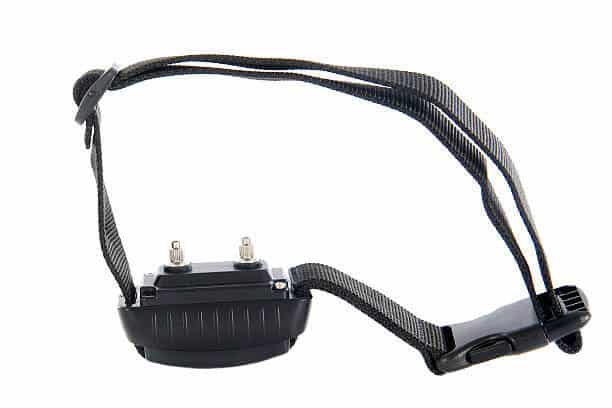
Ecollars, or electronic collars, are a type of training collar that delivers electrical stimulation to the dog’s neck.
Ecollars are safe and effective when used properly, but there is potential for harm if they are not used correctly. Ecollars should only be used under the supervision of a qualified trainer, and only as part of a positive reinforcement training program.
Ecollars should never be used to punish a dog, as this can lead to negative associations and increase stress levels. If you have any concerns about using an Ecollar with your dog, please consult with us before proceeding.
How Long Should a Dog Wear An Ecollar?
On average, most dogs can wear the collar for 8 -10 hours per day without developing skin problems. But it is always important to relocate the receiver after a few hours to a different area on the dog’s neck.
Dogs with very thick coats may need to have the E Collar on for a shorter period of time. If you notice any skin irritation, please remove the E Collar and consult your veterinarian.
What Is The Difference Between Ecollar and Shock Collar?
Shock collars are also known as dog training collars, e-collars, or electronic collars. These training devices work by first giving your dog a warning beep or vibration, which is followed by a remote shock if the dog does not obey the command.
E Collars, on the other hand, are only used to deliver corrections and do not have any warning before delivering a shock.
While shock collars may seem like a harsh way to train your dog, they are actually a very effective tool when used correctly. The key is to use them in a positive way so that your dog associates the collar with good things instead of feeling scared or anxious.
Here are some tips on how to use a shock collar correctly:
- Start by using the lowest setting possible and gradually increase the intensity if needed.
- Use the shock collar in short bursts rather than leaving it on for long periods of time.
- Make sure to praise your dog when he or she does something you want them to so that they associate the collar with positive things.
- Never use the shock collar in a punitive way or as a way to physically harm your dog.
Shock collars are a great tool for training dogs, but it’s important to use them correctly. By following these tips, you can make sure that your dog has a positive experience with the collar and learns to obey commands quickly.
What Can I Use Instead Of a Shock Collar?
If you’re looking for an alternative to a shock collar, there are several options available.
One option is an Educator Ecollar, which uses a low-level electrical current to stimulate the dog’s neck. Another possibility is a remote training collar, which sends a signal to the dog’s collar that can be used to correct bad behavior.
Clicker training is another popular method of training that does not use any type of physical punishment. With clicker training, the dog is trained to associate a certain sound with a positive reinforcement, such as a treat. This method can be used to teach the dog basic commands, tricks, and even simple behaviors.
Positive reinforcement training is a great way to train your dog without using any kind of physical punishment. With this type of training, you reward the dog for good behavior instead of punishing him for bad behavior. This method is often used in conjunction with other methods, such as clicker training, to help the dog learn quickly.
Gentle leader collars are another type of collar that can be used as an alternative to a shock collar. These collars work by applying pressure to the dog’s muzzle, which helps to control his behavior. This type of collar is not recommended for all dogs, so be sure to consult with us before using one.
related article in ourDogsWorld101.com
Citronella collars are also an option for those looking for an alternative to shock collars. These collars work by emitting a citronella spray when the dog barks. The spray is harmless to the dog, but it is often enough to deter him from barking.
No matter what type of collar you choose, be sure to use it correctly and only as a last resort. Remember that positive reinforcement is often the best way to train your dog.
Ultimately, the best way to find an alternative to a shock collar is to experiment with different methods and see what works best for you and your dog.
There is no one-size-fits-all solution when it comes to dog training, so find the method that works best for you and your furry friend.
When Should I Start Ecollar Training?
When it comes to the question of how old is “old enough” to start using an e-collar, the answer is not as straightforward as you might think.
Many people believe that puppies are too young to start using an e-collar, but this isn’t necessarily true. The age at which you start training with an e-collar will depend on a number of factors, including your puppy’s personality and temperament.
If you have a particularly active or willful puppy, you may find that traditional methods of training, such as verbal commands and rewards, aren’t effective. In these cases, starting e-collar training at an early age can be beneficial.
On the other hand, if your puppy is relatively easygoing and receptive to training, you may not need to begin e-collar training until they are a bit older.
Ultimately, the decision of when to start e-collar training will be up to you and your trainer. If you have any concerns or questions about whether e-collar training is right for your puppy, be sure to speak with a professional before making a decision.
Do Professional Dog Trainers Use Shock Collars?
As a dog trainer myself I don’t, however I do know that there are many trainers out there who do. Why? Because it’s a very controversial topic with a lot of people thinking it’s inhumane, when in reality if used correctly it’s not.
I have seen first hand the benefit of using one on a dog that is otherwise unmanageable without it. That being said, I would only use it as a last resort and only after trying everything else possible first.
Shock collars, or e-collars as they are sometimes called, have come under a lot of scrutiny in recent years.
There are those who believe that they are cruel and inhumane, while others swear by their effectiveness. So, what is the truth? Do professional dog trainers really use shock collars?
The answer is, it depends. While there are some trainers who avoid using shock collars at all costs, there are others who find them to be a useful tool in certain situations. It really comes down to the individual trainer and their own personal beliefs.
There are a few things to keep in mind if you are considering using a shock collar with your dog.
First of all, it is important to make sure that you are using the collar correctly. Shock collars can cause pain and distress if used incorrectly, so it is important to consult with a professional before using one.
Second, you should only use a shock collar as a last resort. There are other training methods that can be just as effective (if not more so) that do not involve the use of pain or punishment.
Only use a shock collar if you have tried everything else and you are out of options.
And finally, make sure that you are using the lowest level of stimulation possible to get the desired effect. It is important to start at the lowest level and only increase the level if absolutely necessary.
So, do professional dog trainers use shock collars? It depends on the trainer, but there are definitely some who find them to be a useful tool in certain situations. Just make sure that you are using them correctly and only as a last resort.
Are Vibration Collars Better Than Shock Collars?
Although the collars are similar, vibration collars are considered much safer and more humane than shock collars. With a vibration collar, the dog will still be able to feel the sensation, but it will not be as painful as a shock collar.
Some people argue that using any type of collar on a dog is cruel, but if it is used correctly, it can be a helpful tool in training. It is important to remember that the goal is to train the dog, not to punish them. If you use either type of collar incorrectly, it can lead to negative associations and make the training process much more difficult.
If you are considering using a vibration or shock collar on your dog, it is important to do your research and understand how to use the collar correctly. It is also important to speak with your veterinarian to get their professional opinion on whether or not a collar is right for your dog.
Can Shock Collars Cause Brain Damage?
Many ask, can shock collars cause brain damage to dogs? No, Ecollars cannot cause brain damage to dogs. Ecollars have been used on dogs for over 40 years without any reports of brain damage. In fact, Ecollars are actually quite safe and effective when used properly.
So, what exactly are Ecollars and how do they work? Ecollars are also known as e-collars, remote training collars, or shock collars. They are devices that deliver a brief electrical stimulation to the dog’s neck in order to get their attention or correct a behavior. The stimulation is not painful or harmful, but it is enough to get the dog’s attention so that they can be trained.
Ecollars are an effective training tool when used correctly. They can be used to train dogs of all ages, from puppies to adult dogs. Ecollars can be used to teach obedience commands, stop unwanted behaviors, and even potty train puppies.
There are many different types and brands of Ecollars on the market today. It is important to do your research and find an Ecollar that is right for you and your dog. You will also want to make sure that you find a reputable trainer who is experienced in using Ecollars and can show you how to use them properly.
If you are thinking about using an Ecollar to train your dog, remember that they are a safe and effective training tool when used correctly. Ecollars are not harmful and will not cause brain damage to your dog.
Are Electric Collars Cruel?
Ecollars are often misused and can cause great harm to your dog. Ecollars should only be used as a last resort, and only under the guidance of a certified trainer.
Ecollars are not a quick fix, and should not be used as a punishment. Ecollars can be very dangerous if not used properly. If you are considering using an Ecollar on your dog, please consult with a certified trainer first.
How Long Is e-collar Training?
How long is e-collar training? It really depends on your dog and how quickly they learn. Some dogs pick up the basics very quickly and only need a few days or weeks of training.
Others may take longer, particularly if they are resistant to the collar at first. Ultimately, it will take as long as it takes for your dog to learn the desired behavior and respond consistently to the collar.
Patience and perseverance are key!
Where Are E collars Banned?
Areas that have banned shock collars include Denmark, Norway, Sweden, Austria, Switzerland, Slovenia, Germany, Quebec, and some parts of Australia.
In the United States, there are no current federal laws against Ecollar use, but some states and cities have passed their own bans. For example, Ecollars are banned in the state of Colorado, and the city of Seattle.
While Ecollars are not currently illegal in most areas of the world, that does not mean that they are safe or humane.
Ecollars deliver a painful electric shock to dogs whenever they disobey a command or step out of a certain area. This can cause physical pain and injury, as well as emotional distress.
Ecollars have also been known to malfunction, delivering shocks even when no command has been given. For these reasons, many animal welfare organizations have spoken out against Ecollar use, and continue to push for bans in more areas.
Do you live in an area that has banned Ecollars? If so, how do you feel about this law? Do you think more areas should follow suit? Let us know in the comments!
Why Should E-collars Be Banned?
E-collars, also known as shock collars, are devices that deliver an electric shock to a dog in order to train or discipline them. They are controversial because many people believe that they cause pain and suffering to dogs, and should therefore be banned.
There are a number of reasons why e-collars should be banned. Firstly, they cause pain and suffering to dogs. Shock collars deliver an electric shock which can be extremely painful for dogs.
In some cases, the shocks have been known to cause burns on the skin of the dog.
Secondly, shock collars can also be harmful to a dog’s health. The shocks can cause physical injuries such as bruises or burns, and in some cases they have been known to cause cardiac problems.
Thirdly, shock collars can have a negative impact on a dog’s behavior. The shocks can make dogs anxious and stressed, and can also lead to aggression.
Finally, e-collars are cruel and inhumane. Dogs deserve to be treated with respect and compassion, and shock collars do not meet these standards.
For all of these reasons, e-collars should be banned. They cause pain and suffering to dogs, can be harmful to their health, and can have a negative impact on their behavior.
Additionally, they are cruel and inhumane, and do not meet the basic standards of care that dogs deserve.
Do Shock Collars Increase Aggression?
The use of positive punishment in the form of choke collars, prong collars and shock collars can cause aggression in dogs, according to a study published in Applied Animal Behavior Science.
The study’s authors used data from the C-BARQ questionnaire to examine the correlation between the use of aversives and aggression in a sample of 8,331 dog owners.
They found that dogs who were trained with choke collars, prong collars or shock collars were significantly more likely to show aggression than those who were not trained with these aversives.
“The findings of this study suggest that the use of aversives such as choke collars, prong collars and shock collars may increase aggression in dogs,” said lead author Dr. Emily Weiss.
“These results highlight the importance of using positive reinforcement-based training methods, which have been shown to be more effective and humane.”
If you’re looking for a way to train your dog that is both effective and humane, positive reinforcement-based training is the way to go. Shock collars, prong collars and choke collars may increase aggression in dogs, so it’s best to avoid using them.
Why Are E-collars Banned In Europe?
E-collars, or electronic collars, are devices that deliver an electric shock to a dog in order to train them. While they may be effective in some cases, there is evidence that they can also cause harm. As a result, e-collars are banned in many European countries.
There are a number of reasons why e-collars may be harmful to dogs. First, the electric shock can be painful and stressful for the dog. Second, e-collars can actually increase aggression in some dogs. And finally, e-collars can interfere with the bond between dog and owner.
So, while e-collars may be a quick fix for some behavior problems, they are not without risks. And, in light of these risks, it’s not surprising that e-collars are banned in many European countries.
Are E-collars Going To Be Banned In England?
Electric shock collars for cats and dogs will be banned in England, the government has announced. The training devices deliver up to 6,000 volts of electricity to an animal’s neck, and can be used to punish pets for bad behavior.
The government says the collars cause “unnecessary pain and suffering”, and will make it an offense to buy or use one from April next year.
It is already illegal to use the devices in Wales and Scotland.
Animal welfare groups have long campaigned for a ban, saying the collars are cruel and ineffective.
The RSPCA said it was “delighted” by the announcement, while the Kennel Club described it as a “great day for dogs”.
What Are Electric Shock Collars?
Electric shock collars are also known as e-collars, remote training collars or remote shock collars.
They are used to train dogs, and sometimes cats, by delivering a short burst of electric shock to the animal’s neck.
The devices can be controlled manually by the owner, or they can be set to activate automatically when the pet performs certain behaviors, such as barking or going into areas of the home where they are not allowed.
Why Are They Being Banned?
The government says the use of electric shock collars causes “unnecessary pain and suffering” to animals, and that there is “no evidence” that they are effective in training pets.
It says the collars can cause long-term psychological harm to animals, as well as physical pain.
The ban will make it an offense to buy, sell or use an electric shock collar in England, with fines of up to £20,000 for anyone found breaking the law.
Is This The First Time They’ve Been Banned?
No – electric shock collars have been banned in Wales since 2010, and in Scotland since 2016.
The devices are also illegal in Austria, Denmark, Germany, Luxembourg, Norway and Switzerland.
What Do Animal Welfare Groups Say?
Many animal welfare groups have long campaigned for a ban on electric shock collars, saying they are cruel and ineffective.
The RSPCA has described them as “barbaric” and “a step too far”.
The Kennel Club has said they are “unnecessary and cruel”, while the Dogs Trust has said they are “a shortcut that poses a real threat to animal welfare”.
What Do Proponents Of The Devices Say?
Some people who use electric shock collars argue that they are a necessary tool for training dogs, and that used correctly, they do not cause any harm.
The British Veterinary Association has said it does not support the use of electric shock collars, but it is not opposed to their use in principle, provided they are used properly.
When Will The Ban Come Into Effect?
The ban on electric shock collars came into effect in England from April 2020.
Do Vets Recommend Shock Collars?
The British Veterinary Association and the British Small Animal Veterinary Association both recommend “against the use of electronic training aids for cats,” and the former has gone so far as to call their use “unethical.”
The American Veterinary Society of Animal Behavior (AVSAB) does not have an official position on shock collars, but its 2010 President Dr. Nicholas H. Dodman wrote an article entitled “The Risks of Positive Punishment (Choking, Pinching, Slapping, Snaring) in Animal Training” in which he states:
“Aside from the fact that Punishment (e.g. electric shock) involves a negative experience for the animal which is often perceived as unpleasant or painful, there are several other potential risks.
There is evidence that animals trained with positive punishment show increased fearfulness and aggression towards people, and are less willing to approach or interact with new people or animals.
These effects may be worse when the animal is already fearful or anxious.”
Dodman also notes that there have been no scientific studies to show that shock collars actually work as a training tool, and that “any behavior modification that causes fear, pain or distress should not be used.”
So while there is no official stance from AVSAB on shock collars, it seems clear that the organization does not recommend their use.
If you are considering using a shock collar on your dog or cat, it’s best to consult with a veterinary behaviorist first to see if there are other, more humane options available.
Are Ecollars Abused?
Shock collars are often misused and can create fear and aggression in dogs. Ecollars, or electronic collars, are most commonly used in dog training. They deliver an electric shock to the dog when they perform a certain behavior that is undesired by the owner. Ecollars can also be used to deliver a vibration or tone as a warning before delivering a shock.
Shock collars are designed to correct a dog’s behavior by delivering an unpleasant stimulus that the dog will try to avoid. However, if the collar is not used properly, it can do more harm than good. Ecollar abuse is when the collar is used excessively, resulting in physical and psychological damage to the dog.
Ecollar abuse often occurs when owners do not understand how to use the collar properly, or when they are using the collar for the wrong reasons. Ecollar abuse can also occur when owners are not consistent in their training, or when they use the collar out of frustration.
Ecollar abuse can lead to a number of problems in dogs, including fear, anxiety, aggression, and increased stress levels.
Ecollar abuse can also cause physical injuries, such as burns or abrasions on the neck. If you suspect that a dog is being abused with an Ecollar, it is important to report it to the necessary animal welfare group in your country.
Shock collars are a controversial topic, and there is much debate over whether or not they should be used at all.
However, if you do decide to use an Ecollar, it is important to use it properly and avoid abusing it.
E Collar abuse can cause serious harm to your dog, both physically and emotionally.
Why Are E-collars Controversial?
E-collars, or electronic collars, are a type of dog training collar that uses electrical stimulation to train dogs. They are controversial because some people believe that they are inhumane and cause unnecessary suffering, while others believe that they are a necessary and effective tool for training dogs.
There is no scientific evidence to support either claim, but there are anecdotal reports from both sides.
Some people who have used e-collars on their dogs report that the dogs were not harmed and actually learned faster than with other methods.
However, there are also reports of dogs being injured or even killed by e-collars, so it is important to use them carefully and only under the supervision of a qualified trainer.
If you are considering using an e-collar on your dog, it is important to do your research and talk to a qualified trainer to decide if it is the right choice for you and your dog.
Does Cesar Millan Use An Ecollar?
Cesar Millan is a world-renowned dog trainer, and he’s often asked about his thoughts on using Ecollars. Ecollars are devices that deliver a mild electric shock to a dog in order to train them.
Millan has said that he believes Ecollars can be effective training tools, but they should only be used as a last resort. He prefers to use positive reinforcement methods such as clicker training instead.
However, he does acknowledge that there are some situations where an Ecollar may be the best option. For example, if a dog is displaying aggressive behavior, an Ecollar can help to quickly correct the problem.
If you’re considering using an Ecollar to train your dog, it’s important to consult with a professional trainer first. They can help you determine if an Ecollar is right for your situation and provide guidance on how to use it safely and effectively.
Are Vibration Collars Cruel?
Will a vibration collar hurt my dog? Nope! Vibration collars will simply send a buzz to your dog’s neck.
These collars will not shock or cause any pain to your dog. They are a gentle way to train your dog and get their attention.
If you are looking for a more powerful way to train your dog, then you may want to consider an electronic collar. These collars can send a mild shock to your dog’s neck that will startle them and get their attention.
However, these collars should only be used under the guidance of a professional trainer. Used incorrectly, they can cause serious harm to your dog.
So, if you are wondering if vibration collars are cruel, the answer is no! They are a safe and effective way to train your dog.
Is a Vibration Collar The Same As An Ecollar?
Vibration collars are painless, unlike shock collars.
Shock collars use negative reinforcement and pain to instill fear and eliminate bad behaviors, while vibration collars use positive reinforcement in the form of a short vibration to help your dog focus and stay on task.
Although they may seem similar, there are some key differences between vibration and shock collars that you should be aware of before making a purchase.
Shock collars apply an electric current to the dog’s neck that gives them a mild shock. The intensity of the shock can be adjusted, but it is always painful for the dog.
The idea behind using a shock collar is to train the dog to associate certain behaviors with pain, so that they will avoid those behaviors in the future.
Vibration collars, on the other hand, emit a short burst of vibrations that startle the dog but do not cause any pain. The vibration is often used as a warning before administering a shock, but it can also be used on its own as a form of positive reinforcement.
When used correctly, vibration collars can be an effective way to train your dog without causing them any pain or fear.
If you are considering using a collar to train your dog, it is important to choose the right type of collar for your needs.
Shock collars should only be used by experienced trainers who understand how to properly use them, and only when all other training methods have failed.
Vibration collars are a safer and more humane option for most dog owners, and they can be just as effective when used correctly.
What Is The Best No-Shock Dog Collar?
For me personally the WolfWill Humane No-Shock Dog Training collar is the best on the market. It has a unique design which helps to train your dog without using any type of shock or punishment.
I have found that this is the most effective way to train a dog and it has worked really well for us. The collar is also very affordable and it is made from high quality materials.
I would highly recommend this collar to anyone who is looking for a no-shock dog training collar.
The 5 Best No-Shock Training Collars
As a professional dog trainer I have used many training methods and No-Shock collars over the years. I have found that No-Shock collars are one of the best tools you can use to train your dog.
The great thing about no-shock collars is that they are very effective at training dogs. They are also very safe for the dog and will not cause any harm if used properly.
Here are 5 of the best no-shock collars on the market today:
1. sport dog
- 500 Yard Range
- Buzz, Beep, or Static Modes
- Waterproof to 25ft
- Fits Neck Sizes 5″ – 22″
- Rechargeable Lithium Ion Batteries
- Uses Dry Tek Technology

2. Connete Auto citronella bark collar
- Humane & No Remote
- Only Releases A Spray After 3 Barks.
- 2 Spray level Volumes.
- Fits All Sizes Of Dogs Up To 130LBS.
- Rechargeable.
- Lasts Up To 10 Days On A Single Charge
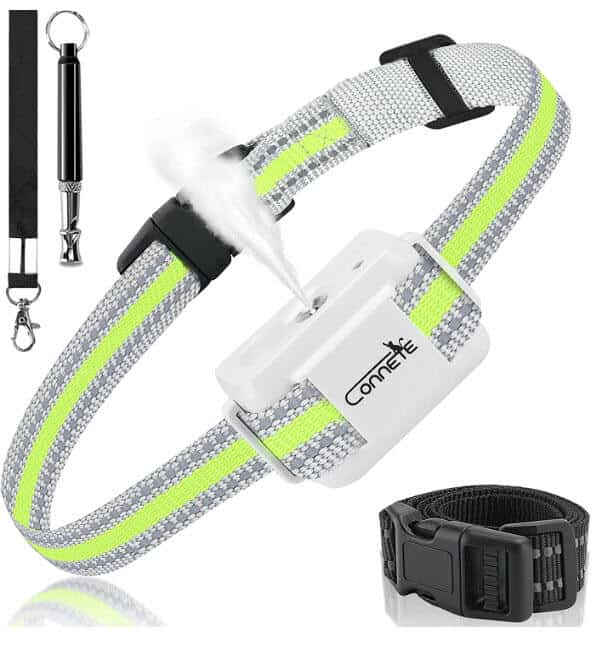
3. petSafe audible dog bark collar
- Learns Your Dogs Bark.
- unique Bark Sensing Technology.
- Releases The Sound Of an Aerosol Spray When Your Dog barks.
- Discourages Barking Quickly and Effectively.
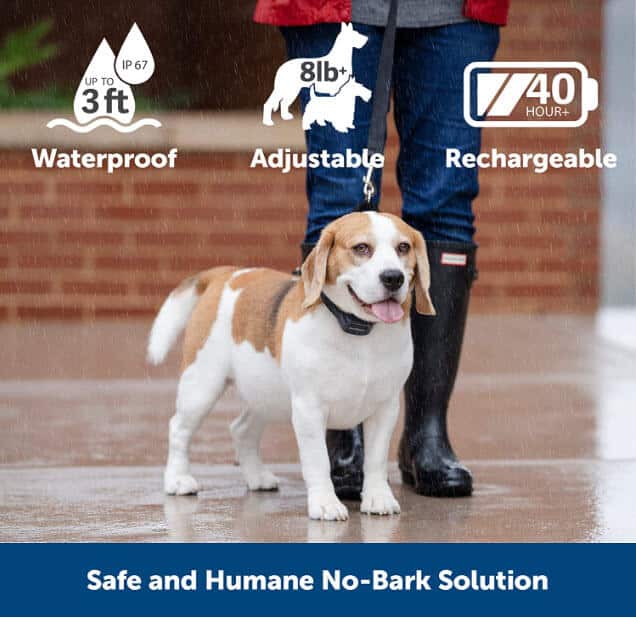
4.petSafe wireless Pet Fence
- Waterproof Collar.
- Long battery Life.
- Works With All PetSafe Wireless Fence Transmitters.
- Personalize Your Dogs Settings.

5. mini educator remote training collar
- 1/2 Mile Range.
- Fully Waterproof.
- Humane Training Method.
- 100 Levels of Tone & Vibration Levels.
- Fits Neck Sizes 6″ – 30″
- Comes With Training Tips.
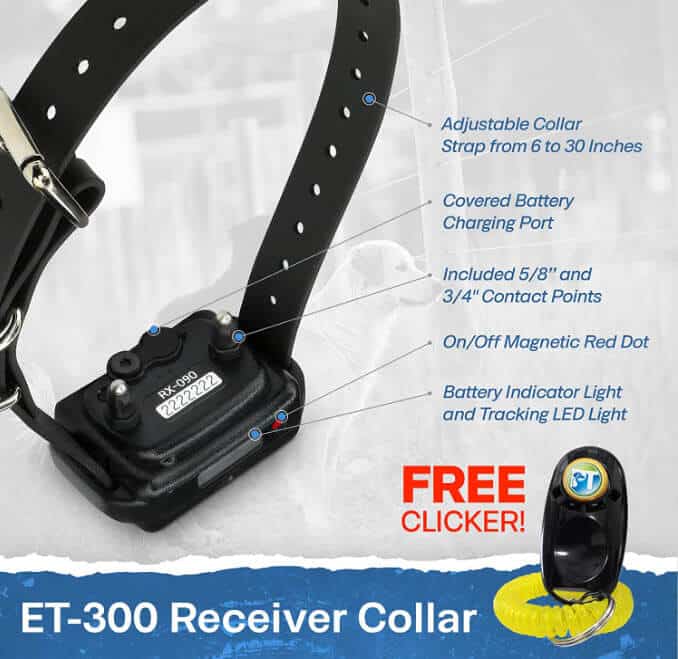
ECollar Summary
So, should you use ecollars to train your dog? The answer is complicated. There are pros and cons to using ecollars for training dogs. On the one hand, they can be an effective way to get your dog’s attention and stop unwanted behaviors quickly.
However, there is also a risk that ecollars may be used in a cruel or harmful manner. If you’re considering using them, it’s important to do your research and make sure you’re using them safely and effectively.
There are many other methods of training dogs available, so if you’re unsure about using ecollars, let us know and we can help you find the best method for your pet.
What do you think about using Ecollars to train dogs? Let us know in the comments!
Remember… Owning a dog should be FUN, not a chore!
My name is Mark and I currently live in Australia.
I am passionate about educating Doggie parents and helping you to make the best possible decisions to help your dog live a long, happy and healthy life.
As a Dog trainer & behaviorist I have always used The Dog Solution methods with a 100% success rate.
Feel free to contact us, and stay tuned for updates and informative posts on dog care, training, diet, and much more!
“Dogs do speak, but only to those who know how to listen” – Orhan Pamuk





